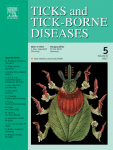Ver ítem
- xmlui.general.dspace_homeCentros Regionales y EEAsCentro Regional Santa FeEEA RafaelaArtículos científicosxmlui.ArtifactBrowser.ItemViewer.trail
- Inicio
- Centros Regionales y EEAs
- Centro Regional Santa Fe
- EEA Rafaela
- Artículos científicos
- Ver ítem
Tick host specificity: an analysis based on host phylogeny and tick ecological features using Amblyomma triste and Amblyomma tigrinum immature stages
Resumen
Here we have evaluated tick host specificity with two different methodological approaches considering Amblyomma tigrinum and Amblyomma triste immatures as targets. Firstly, the Std* index was applied, which considers host phylogenetic relationships weighted by the prevalence of the parasite; followed by generalized linear models to explore associations between different host species and burdens and prevalence of larvae and nymphs, independently. The Std*
[ver mas...]
Here we have evaluated tick host specificity with two different methodological approaches considering Amblyomma tigrinum and Amblyomma triste immatures as targets. Firstly, the Std* index was applied, which considers host phylogenetic relationships weighted by the prevalence of the parasite; followed by generalized linear models to explore associations between different host species and burdens and prevalence of larvae and nymphs, independently. The Std* index showed that A. tigrinum larvae and nymphs infest host species belonging to different orders and classes, respectively; while A. triste immatures fed on hosts that belong to different tribes, showing that both tick species have low specificity and thus, a generalist behavior. When analyzing prevalence and burdens, we found that both tick species infest some hosts more heavily compared with the rest. Even though immature stages of A. triste and A. tigrinum are generalists, the level of infestation within the range of usual hosts of these two species is uneven. This shows that a generalist behavior may result in dissimilar levels of infestation across a range of usual hosts.
[Cerrar]

Autor
Colombo, Valeria Carolina;
Fasano, Agustín A.;
Beldomenico, Pablo Martín;
Nava, Santiago;
Fuente
Ticks and Tick-borne Diseases 9 (4) : 781-787 (May 2018)
Fecha
2018-05
ISSN
1877-959X
1877-9603
1877-9603
Formato
pdf
Tipo de documento
artículo
Palabras Claves
Derechos de acceso
Restringido
 Excepto donde se diga explicitamente, este item se publica bajo la siguiente descripción: Creative Commons Attribution-NonCommercial-ShareAlike 2.5 Unported (CC BY-NC-SA 2.5)
Excepto donde se diga explicitamente, este item se publica bajo la siguiente descripción: Creative Commons Attribution-NonCommercial-ShareAlike 2.5 Unported (CC BY-NC-SA 2.5)

